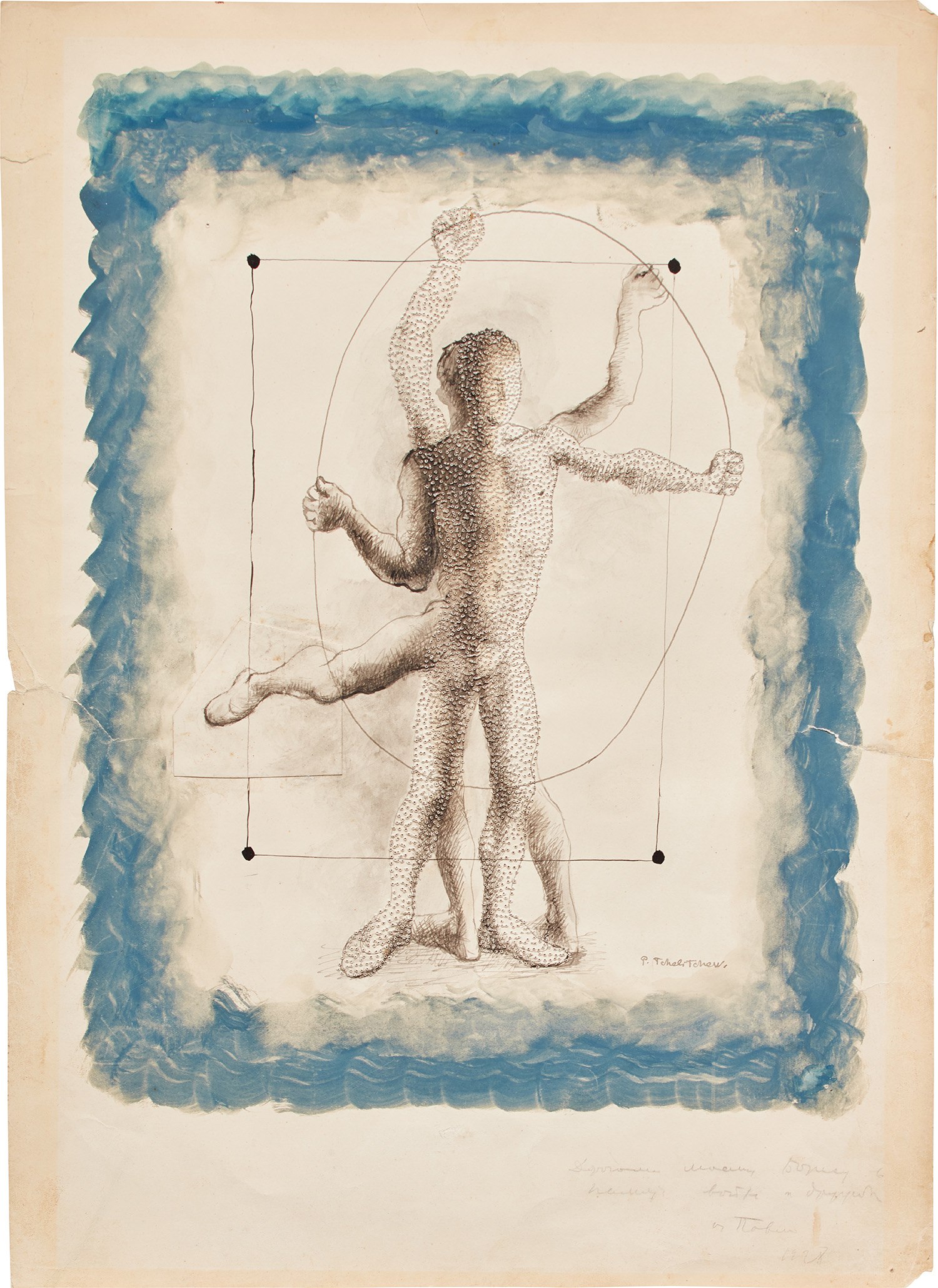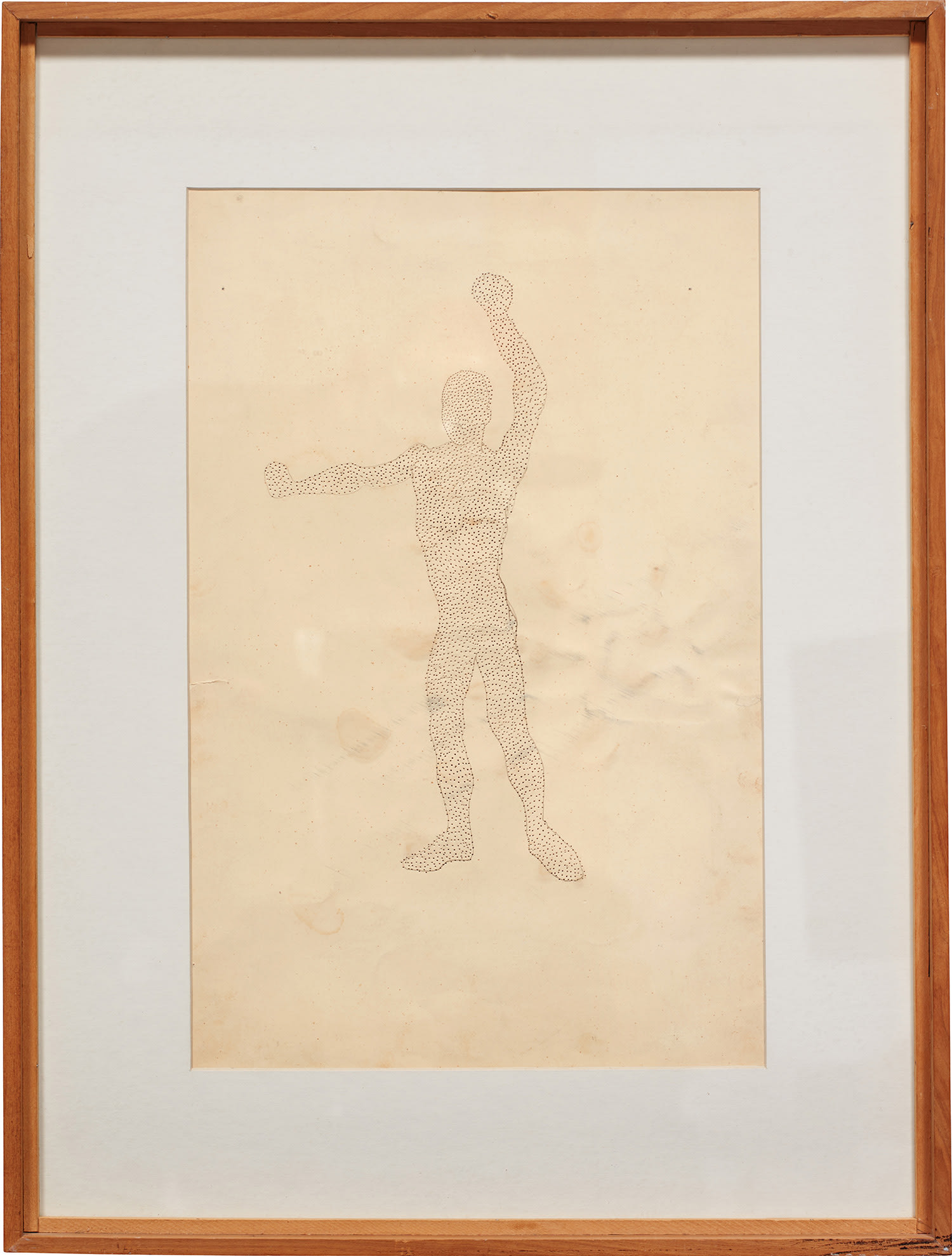





200
Pavel Tchelitchew
Study for a cover of the theater program for the Ballet Russes
- Estimate
- $10,000 - 15,000
$31,500
Lot Details
watercolor, ink paper collage and artist's perforations on paper
signed "P. Tchelitchew." lower right of the image; indistinctly inscribed and dated "... 1928" lower right
19 x 13 3/4 in. (48.3 x 34.9 cm)
Executed in 1928.
We would like to thank Erik La Prade for his assistance in cataloguing this work.
We would like to thank Erik La Prade for his assistance in cataloguing this work.
Specialist